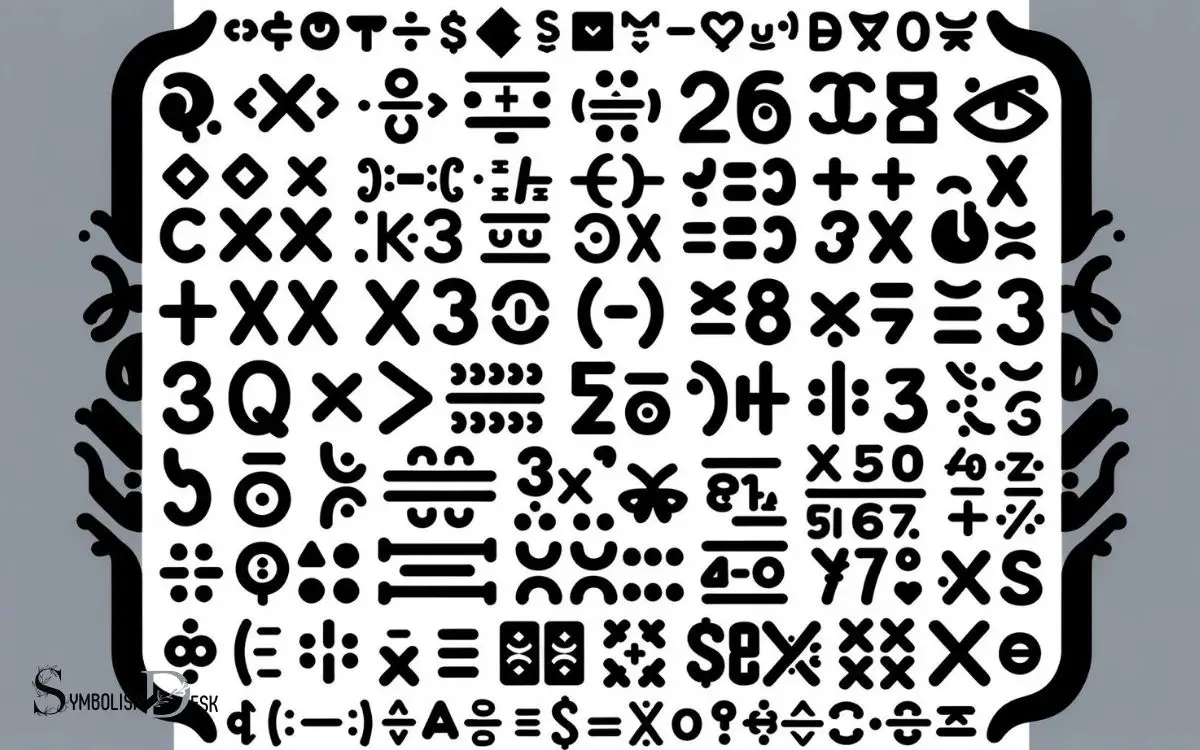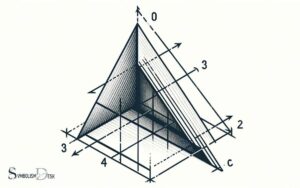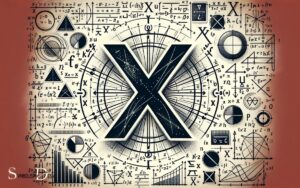Markdown Math Symbols Cheat Sheet: Mathematical Notation!
The Markdown Math Symbols Cheat Sheet is an essential guide for anyone looking to include mathematical notation in their Markdown files.
It covers a broad range of symbols used in various branches of mathematics, such as algebra, calculus, and logic, and includes Greek alphabets and additional symbols for comprehensive expression.
Markdown is widely used for creating formatted text on the web, and when it comes to mathematical documentation, a cheat sheet for math symbols becomes indispensable.
The cheat sheet includes:
For example, to write an equation that includes a summation symbol, you would use the Markdown syntax \\sum_{n=1}^{10} n^2 to display ( _{n=1}^{10} n^2 ).
Unlock the power of mathematical expression in Markdown with this concise and comprehensive cheat sheet.

Key Takeaway
Basic Math Symbols
In the realm of markdown formatting, basic math symbols play an essential role, serving as the foundation for expressing mathematical concepts concisely and effectively.
These symbols, such as +, -, *, and /, represent fundamental operations like addition, subtraction, multiplication, and division.
They provide a means to convey mathematical equations and formulas in a clear and standardized manner, crucial for documentation and communication in various fields including mathematics, physics, engineering, and economics.
Moreover, these symbols form the building blocks for more complex mathematical expressions, allowing for the representation of sophisticated equations and functions.
Understanding and utilizing these basic math symbols is fundamental for anyone working with mathematical content in markdown format, enabling the seamless integration of mathematical notation into written documents and digital platforms.
Greek Letters
Greek letters serve as essential symbols in mathematical notation, contributing to the concise representation of mathematical concepts in markdown formatting. They are commonly used to represent various mathematical constants, variables, and functions.
These Greek letters play a vital role in mathematical expressions, equations, and formulas, allowing for clear and compact representation of mathematical ideas.
Understanding the markdown notation for Greek letters is essential for effectively communicating mathematical concepts in a formatted and readable manner.
Algebraic Symbols
The upcoming discussion will focus on the common algebraic symbols used in mathematical expressions and equations. It will also explore the practical application of these symbols in solving algebraic problems.
This section aims to provide a concise and clear understanding of the fundamental algebraic symbols and their relevance in mathematical contexts.
Common Algebraic Symbols
Algebraic symbols are essential for conveying mathematical relationships and operations within algebraic expressions. Understanding common algebraic symbols is crucial for mastering algebra.
Here are some of the most frequently used algebraic symbols:
- Variables: Represent unknown or changing quantities, typically denoted by letters like x, y, or z.
- Constants: Fixed values that do not change, often represented by specific numbers such as 3, 5, or π.
- Operators: Symbols used to indicate mathematical operations, including + (addition), – (subtraction), * (multiplication), and / (division).
- Exponents: Represented by a raised number or variable, indicating the power to which a base is raised, such as x² or 3⁴.
Application of Symbols
An understanding of the practical application of algebraic symbols is vital for effectively expressing mathematical relationships and operations within algebraic expressions.
Algebraic symbols are used to represent quantities, variables, and relationships in mathematical equations.
Below is a table highlighting some common algebraic symbols and their applications:
| Symbol | Name | Application |
|---|---|---|
| x | Variable | Represents an unknown value in an equation |
| + | Addition | Combines two or more quantities |
| – | Subtraction | Finds the difference between two quantities |
These symbols are fundamental in algebra and are used to manipulate and solve equations. Understanding their applications is crucial for mastering algebraic expressions.
Calculus Notations
The POINTS in the context of calculus notations encompass key symbols used in calculus, common derivative notations, and shorthand representations of integrals.
These symbols and notations are fundamental in expressing mathematical concepts and computations in calculus.
Understanding and applying these points is essential for effectively working with calculus equations and problems.
Key Calculus Symbols
Calculus’ fundamental notation includes symbols such as derivatives, integrals, and limits. Understanding these key calculus symbols is crucial for mastering the language of calculus.
Here are some essential calculus symbols and their meanings:
- Derivative Notation: The derivative of a function f(x) is denoted as f’(x) or df/dx.
- Integral Notation: The integral of a function f(x) with respect to x is denoted as ∫f(x) dx.
- Limit Notation: The limit of a function f(x) as x approaches a constant value c is denoted as lim(x→c) f(x).
- Summation Notation: The summation of a series of terms from k=1 to n is denoted as Σn k=1.
Understanding these symbols is crucial for effectively communicating and solving calculus problems.
Common Derivative Notations
In calculus, various notations are used to denote derivatives. The most common notation for the derivative of a function y = f(x) with respect to x is dy/dx, representing the rate of change of y with respect to x. Another widely used notation is f’(x), where the prime symbol denotes the derivative.
Leibniz’s notation, dy/dx, is used to express the derivative of y with respect to x, emphasizing the ratio of the differentials dy and dx.
Additionally, the Newton’s notation, denoted as ẍ, represents the second derivative of x with respect to time. These notations are fundamental in calculus and are essential for understanding and solving problems related to rates of change and slopes of curves.
Integral Representation Shorthand
As we delve into the topic of integral representation shorthand in mathematics, it is essential to understand the various calculus notations used to represent integrals.
- Definite Integral: Represented as ∫f(x)dx, where a and b are the lower and upper limits of integration, respectively. a b
- Indefinite Integral: Denoted as ∫f(x)dx, without specific limits, representing a general antiderivative of the function f(x).
- Riemann Integral: Defined as ∫f(x)dx, based on Riemann sums and the limit of these sums as the partition of the interval approaches zero. a b
- Lebesgue Integral: Represented as ∫f(x)dμ, where μ is a measure, extending the concept of integration to a broader class of functions.
Understanding these notations is crucial for effectively working with integrals in calculus.
Logic and Set Theory Symbols
Discussing logic and set theory symbols can help clarify complex mathematical concepts and facilitate precise communication within the field of mathematics.
In logic, symbols such as ∧ (logical AND), ∨ (logical OR), ¬ (negation), → (implies), and ↔ (if and only if) are used to represent logical operations.
Set theory symbols include ∈ (element of), ∉ (not an element of), ⊆ (subset of), ∪ (union), ∩ (intersection), and ∅ (empty set). These symbols are essential for expressing relationships between sets and making logical deductions.
Understanding and utilizing these symbols is crucial for various mathematical areas, including calculus, algebra, and discrete mathematics. Mastery of logic and set theory symbols is fundamental in building a strong foundation for advanced mathematical studies.
Miscellaneous Math Symbols
Introducing various mathematical symbols used for representing miscellaneous concepts and operations.
- ∀ (For all): Represents universal quantification in logic, indicating that a statement is true for all elements in a specific set.
- ∃ (There exists): Denotes existential quantification, stating that there exists at least one element in a set satisfying a given condition.
- ∈ (Element of): Indicates that an element belongs to a set.
- ∉ (Not an element of): Denotes that an element does not belong to a set.
These symbols are essential for expressing a wide range of mathematical concepts and operations, allowing for precise and concise communication within the field of mathematics and related disciplines.
Conclusion
The markdown math symbols cheat sheet provides a quick reference for various mathematical symbols used in different branches of mathematics. It is a useful tool for students, teachers, and professionals to easily access and use mathematical notations in their work. This cheat sheet includes symbols for operations, relations, set theory, logic, calculus, and much more. One of the sections also covers latex relation symbols, which are commonly used in representing mathematical equations and formulas in a more readable and organized manner. Whether you need to reference symbols for arithmetic, algebra, geometry, or statistics, this cheat sheet has you covered with a comprehensive collection of math notation.
For example, a student struggling with understanding calculus notations can use this cheat sheet to clarify their understanding and improve their grades, reducing their stress and anxiety about the subject.






